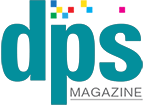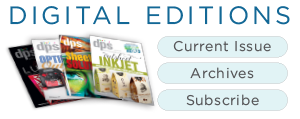By Cassandra Balentine
Part three of three
Digitally printed labels make up a small, but growing segment of the overall market. From entry-level desktop devices to high volume hybrid options, the options are abound. In part one and two of this web series we discuss digital label systems targeting entry- and mid-volume environments.
In part three we take a look at demands, functions, and products in the higher volume print space.
High-end and high-volume print providers seek reliable presses that consistently deliver superior print quality to meet the standards of their clients, ensuring that colors remain vibrant and details are sharp, according to Mike Pruitt, senior product manager, Epson America, Inc. “Because of this, standards like Idealliance G7 are important in a press. Additionally, automated operator functions are becoming essential as they reduce the need for skilled labor while streamlining workflows, minimizing errors and allowing operators to focus on more strategic tasks rather than routine setup and maintenance.”
Taylor Buckthorpe, director of sales and marketing, Colordyne Technologies, also feels that in the narrow web label market, inkjet technologies faces high demand for vibrant print quality, cost-effective short runs, and faster production speeds. “Brands also seek eco-friendly options, material versatility, and integrated finishing features to meet sustainability goals and deliver high-value labels efficiently.”
With less talent readily available for printing technicians and the entrance of a new tech-savvy generation in the workforce, Ben Luly, product manager, Mark Andy, stresses that digital demand continues to grow as it is perfectly suited to meet these needs.
Baldwin In the high-end digital label space, there is a growing demand for precision, speed, and consistency. Brands expect consistent color accuracy from job to job, defect-free output, and streamlined workflows that minimize manual oversight. For converters, this means that ancillary press equipment and technology must adapt to complex label designs, variable data, and high-speed output, all while meeting stringent brand and regulatory standards.
For this market, the Pruitt says the biggest challenge is accommodating the increased speed and complexity of the machine. “Older analog machines can often be fixed on the spot by the owner; however, today’s digital presses require skilled technicians and require print shops to slow or halt production to wait until those technicians arrive on-site.”
Buckthorpe feels that inkjet’s biggest challenge in the narrow web label market is achieving consistent high-quality print across diverse materials while maintaining speed and cost-effectiveness. “This includes balancing the need for vibrant color, durability, and adaptability with substrates, all while meeting sustainability demands and integrating finishing options—all of which require continuous innovation and optimization.”
Luly adds that for those that are new to inkjet, it is challenges to work through the learning curve associated with understanding all of the capabilities, range of materials, and routine maintenance associated with the technology.
Cusak says balancing production speed with quality assurance can be challenges. “As digital presses operate at increasingly high speeds, traditional inspection processes struggle to keep up, especially in detecting subtle defects or color variations over longer runs. Additionally, the complexity of high-end labels—featuring intricate designs, micro-text, textures, and variable data—adds layers of difficulty in quality control, which demands advanced, automated solutions to avoid costly errors.”
Target Applications
High-volume label products target applications include branded labels for clients that require detailed embellishments, shares Pruitt.
Buckthorpe says inkjet is widely used across various label segments, including food and beverage, health and beauty, pharmaceuticals, industrial products, and logistics. “Its strengths in producing high-quality graphics, handling variable data, and supporting short runs make it ideal for food, beauty, and pharmaceutical labels, where flexibility and compliance are key. In industrial and chemical markets, inkjet’s durable inks and material versatility meet the demands for resilience, while its speed and efficiency in logistics enable effective tracking with barcodes and real-time data. This versatility positions inkjet as a go-to solution for diverse label needs.”
or this level of label printer. for high-end applications, Luly says the crossover point is approximately 25,000 feet or with a standard-sized label, about 120,000 labels. The user persona for this type of equipment is typically a medium to large-sized converter. Applications include food and beverage labels, promotional tags, lidding, durables, prime pressure sensitive, seasonal, and health and beauty.
In addition to print engines, John Cusack, product line leader, Inspection, Color, Registration, BW Converting, points out that sophisticated 100 percent inspection systems are ideal for end-use segments with high standards for precision and consistency including pharmaceuticals, medical devices, food and beverage, personal care, cosmetics, and household products. “These sectors often produce runs of complex, high-end labels where quality control is essential to meet both regulatory and brand requirements. BW Converting’s Baldwin brand inspection portfolio provides converters in these industries with the tools to deliver exceptional quality across run sizes, making it an invaluable asset for maintaining customer trust and ensuring product safety.”
On the Market
A variety of label systems target high-volume digital label production.
Canon U.S.A., Inc.
The Canon LabelStream LS2000 is a water-based inkjet digital label press designed for converters seeking a reliable, flexible, and high-performance solution. It excels in producing short-run, diverse self-adhesive labels, offering both productivity and versatility.
Colordyne
Colordyne’s 3800 Series UV-LED and water-based inkjet retrofit engines are designed for seamless integration onto existing printing presses and converting lines and offered as standalone or hybrid printing presses. The 3800 Series offers print widths from 4.25 to 17 inches and supports monochrome or process color configurations, with options for up to seven colors.
Dantex
The Dantex PicoJet is a highly productive UV digital inkjet press, with ultra-high-speed production up to 75 mpm and is capable of producing more than 29.5 million linear feet of printed labels per year. As a five-color printing system, it offers superior print quality thanks to its 2.5 picolitre droplet size and an effective resolution of 1,200×1,200 dpi, and with the inking system offering superior laydown of each color on the previously printed color, constant accuracy and quality is maintained. Furthermore, PicoJet’s operator-friendly PicoPilot software also makes it easy to prepare, print and switch from production to production.
Domino
Converters looking for a Domino digital color inkjet label press have the choice between the N610i and N730i label presses, both of which feature clever i-Tech features to enhance operational efficiency.
The company’s flagship N730i 1200dpi press prints at speeds of up to 70 meters per minute (mpm). The N610i label press prints with 600 dpi resolution at up to 50 mpm, with up to 70 mpm possible at lower resolution. Both are available as roll-to-roll models, as well as integration modules that can be incorporated into any flexographic process. The N610i is also available as a retrofit module, the N610i-R, which can be fitted above flexographic lines to add digital hybrid printing capabilities within the line’s existing footprint.
Durst
The Durst RSCi stand alone 1,200dpi inkjet press is available in 13, 17, and 20 inches and capable of speeds up to 328 feet per minute. Durst KJet and XJet Hyrid printers which incorporate Durst 1,200dpi inkjet along with inline flexo, die cut, lamination, foil for fully integrated hybrid digital/analog printing and finishing.
Epson
The workhorse for Epson digital labels solutions is the SurePress L-6534VW UV press. This model is renowned for its high throughput, up to 2,000,000 square feet per month, coupled with its variety of embellishments leveraging digital varnish.
Gallus
The Gallus One is designed to deliver exceptional flexibility, versatility, and reliability in the production of small to medium-sized digital label production. Initially launched as a fully digital reel-to-reel label press, the Gallus One offers a cost-effective entry into the digital label market with the lowest total cost of ownership. Its advanced smart features and high level of automation ensures optimum efficiency. Today, the Gallus One is fully flexible, allowing customers to evolve from an all-digital press to a hybrid solution. As mentioned, it does this by incorporating conventional units from the Gallus Labelmaster platform. Businesses can then tailor their Gallus One to meet specific production requirements, while maintaining the agility to expand and evolve alongside their growing needs and opportunities.
The Gallus portfolio also includes the Gallus Labelfire 340, designed with flexibility in mind, and prioritizing high availability and uptime for continuous production of high volume label jobs. The Gallus Labelfire 340 seamlessly integrates digital printing with advanced finishing options such as varnishing, laminating and die-cutting. Its compatibility with different ink sets enables the production of a wide range of applications, including conventional labels, low-migration labels and foldable packaging such as tubes and cartons. This versatility makes it a powerful solution for a wide range of production needs.
Mark Andy
The Digital Series HD, and Digital Series HD HighSpeed 1200 are Mark Andy’s top-tier digital label products
The Digital Series HD can print up to 240 feet per minute (fpm), full variable data print (VDP), expanded gamut achieving up to 97 percent of the Pantone range, and high opacity white. The HighSpeed 1200 achieves speeds of up to 480 fpm at full quality, full VDP, and full white opacity.
The Digital Series HD is built on the Performance Series chassis, and can be configured as a hybrid to meet the most demanding label, flexible packaging, shrink, or light carton applications.
Tthe Digital Series HD and HighSpeed 1200 platform allows all work to be completed in one pass, including priming, coating, spot colors, embellishing, lamination, and die cutting, maximizing throughput.
“With the HighSpeed 1200, return on investments are up to four times faster and up to 46 percent greater throughput, 60 percent higher crossover point when compared to flexography. This all means that the converter can achieve more throughput on one press, requiring fewer machines to maintain, less floor space, and less energy consumption,” shares Luly.
Xeikon
Developed for high quality labels, the five-color machine offers a 330 milimeter printing width and speeds up to 70 mpm, even when printing with high opacity white. In addition, Xeikon PX3300HD utilizes a newly developed ink series, PX-Cure LED HD, to ensure perfect curing, while supporting sustainability targets for converters.
A small footprint machine, Xeikon PX3300HD is designed to produce high durability, full-color labels for diverse markets, covering up to 88% of Pantone colors within Delta E 2—rising to 94 percent within Delta E 3.
To meet the specific requirements of the higher resolution engine, Xeikon has developed new PX-Cure LED HD inks. The new inks match the sustainability benefits of the recently introduced PantherCure UV LED series for Xeikon 600-dpi inkjet presses, including significant savings in energy consumption, instant warm up for more agile operation, and 10 times longer lamp life compared to traditional UV arc lamps, resulting in lower waste.
For more on digital label printing, see part one and two of this series as well as our feature article and webinar on the topic.
Jan2025, DPS Magazine



